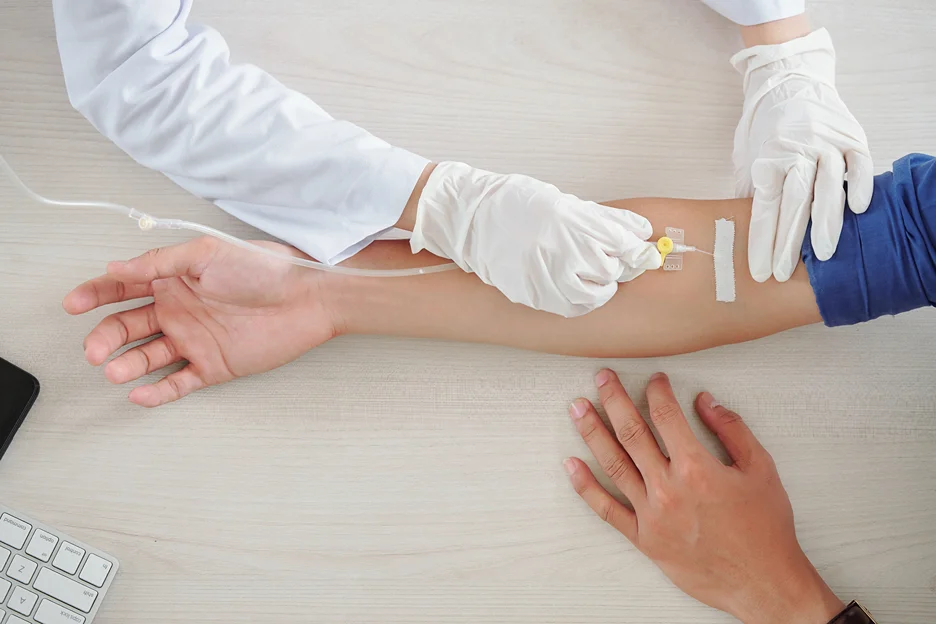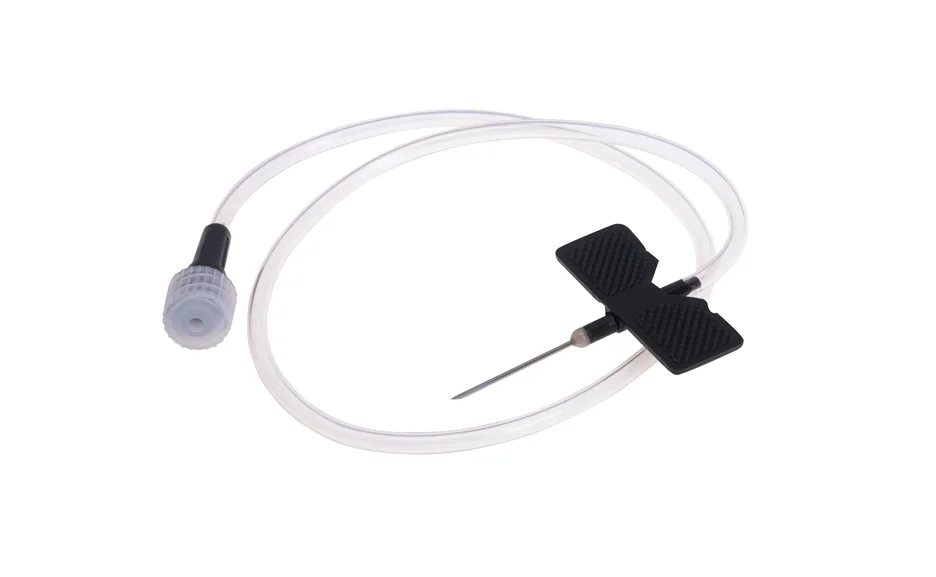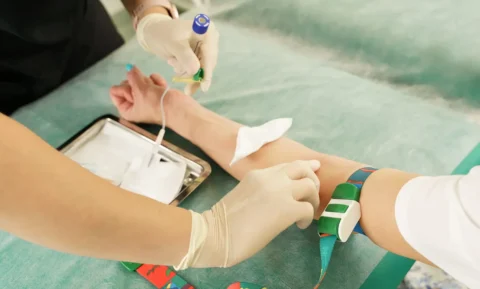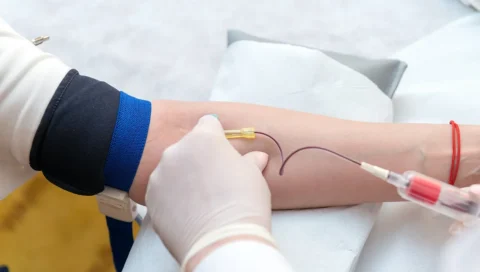Have you ever noticed a bump, bruise, or red and swollen area after getting an IV or injection from a butterfly catheter? This localized reaction at the injection site is not unusual, but can sometimes indicate an underlying issue.
Read on to learn what causes swelling with butterfly catheter injections, tips to prevent it, signs to watch for, and how to treat it. You’ll also discover when to seek medical care for swollen injection sites.
What Causes Swelling at the Injection Site of a Butterfly Catheter?
It’s normal to experience some minor inflammation when a needle punctures the skin and medication or fluid is deposited under the surface.
However, excessive swelling indicates medication or fluid has tracked into surrounding tissue, an allergic reaction has occurred, or there’s irritation from the medication or fluid injected. Here are a few of the usual causes:
Normal Immune Response
Our body’s natural defense kicks in when a foreign substance enters at the injection site. Histamines are released as white blood cells rush to the area, causing localized redness, heat, swelling, and tenderness. This inflammatory response is the body’s way of isolating, diluting, and fighting off potential pathogens or irritants.
Allergic Reactions
Allergies to medication components, preservatives, latex or antiseptics used to cleanse the site can trigger widespread hives, rash, and significant swelling. Even life-threatening anaphylaxis is possible in sensitive individuals. Using a properly documented allergy history can help avoid these outcomes.
Improper Administration
Incorrect injection technique leads to leakage into subcutaneous tissue. Inserting the butterfly needle too shallowly, not securing it properly, injecting too quickly, using an inappropriate gauge or length, and not applying sufficient pressure on removal can all contribute to medication tracking and swelling.
Using too large or too small a needle for the vein and medication can also increase the risk of swelling, so proper gauge selection is important.
Infection
Breaks in sterile technique when inserting the catheter or administering medication raise the risk of infection. Bacteria on the skin or from contaminated solutions can enter the puncture site leading to redness, heat, pain, and swelling. Drainage, fever, and flu-like symptoms may also occur.
There’s also a chance that bacteria on the skin can enter the puncture site and cause complications.
Hematoma
Bleeding under the skin produces a hematoma or bruise. Blood pools under the surface causing discoloration, pain, and a hardened lump around the site. Improper needle removal and lack of pressure facilitate this leakage from the vein into surrounding tissues.
Additionally, certain medications like chemotherapy drugs or irritating solutions can cause inflammation and swelling at the injection site. Elderly, pediatric, and fragile patients may also be more prone to swelling due to fragile veins and tissue.
How Can Swelling Be Prevented When Using a Butterfly Catheter?

Careful attention to product selection, patient assessment, technique, and aftercare helps minimize swelling when administering injections or infusions via a butterfly catheter:
Utilize Proper Sterile Technique
Meticulous hand hygiene, skin cleansing, and use of sterile gloves are essential to reduce infection risk. Maintain a sterile field during insertion and connection of tubing per evidence-based guidelines. Scrub the catheter hub for 15 seconds with an appropriate disinfectant before each access.
Apply Pressure After Removal
Applying firm pressure over the site for 5-10 minutes after needle withdrawal can prevent blood leakage into tissues and lessen bruising and swelling. Elevating the limb above the level of the heart also aids this process.
Choose Appropriate Needle Size
Select the smallest viable needle for the vein and medication viscosity. Larger bore needles require bigger punctures and increase fluid leakage. Maximize the catheter length in the vein while minimizing external portions.
Inject Medications Slowly
Do not overload the vein capacity or exceed the flow rate tolerated. Slow steady injection allows proper medication dispersion without tracking along the catheter path.
Assess For Medication Allergies
Screen for medication allergies and sensitivities before administration. Identify suitable alternatives if swelling or reactions have occurred previously. This helps prevent adverse events.
Secure Catheter Properly
Tape and dressings should immobilize the catheter hub and tubing without tugging the needle or occluding blood flow. Monitor routinely to ensure securement hasn’t loosened. Improper anchoring raises risks.
Educate Patients on Potential Symptoms
Inform patients of expected mild inflammation and instruct them to report any severe or worsening reactions, pain, or noticeable swelling for prompt evaluation. Vigilance aids early intervention.
Teaching patients the signs of swelling to report promptly can help reduce complications.
Use Proper Disposal
Using safety butterfly needles and safe sharps disposal prevents needlestick injuries that can cause swelling and infection.
What Signs of Swelling Should Be Monitored at the Injection Site?
While mild redness and tenderness are common, take note of the following symptomatic swelling which requires prompt attention:
- Redness spreading away from the site
- Warmth and tenderness at the insertion point
- A firm, raised bump or swollen area around the sitz- Bruising or purple, blue discoloration under the skin
- Hives, rash, or itching indicative of allergic response
- Drainage, oozing, or bleeding from the puncture
- Fever, chills, or flu-like symptoms pointing to infection
- Lack of blood return or flashback into tubing indicating improper placement
- Leakage or drainage at the insertion site
- Monitor for signs of infiltration, such as paler, tighter, or cooler skin around the injection site, which may indicate IV fluid leakage.
- Watch for symptoms spreading away from the localized site, which may indicate a serious reaction.
- Severe pain at the insertion site may be a sign of intra-arterial injection rather than IV.
- Check the insertion site regularly for swelling, redness, or tenderness, which could indicate infection.
Report any pain or swelling that worsens over time rather than improving. Seek evaluation for shortness of breath, widespread rash, or other signs of reaction away from the localized site as well. Monitor closely for a few days after injection to observe the healing process.
How Is Swelling at the Injection Site of a Butterfly Catheter Treated?
Firstly, remove the catheter if swelling begins shortly after injection, as medication or fluid tracking into tissue is likely. Apply a cold or warm compress to reduce pain and inflammation. Additional treatment depends on the cause:
Allergic Reactions
Antihistamines, corticosteroids, and epinephrine may be prescribed by a healthcare provider to treat allergic responses, with epinephrine used for severe systemic reactions. Anaphylaxis requires immediate emergency care to maintain airways.
Infection
Applying antibiotic ointment may help treat minor surface infections at the swollen site. Oral antibiotics may also be prescribed. Intravenous antibiotics requiring hospitalization are necessary for serious infections like cellulitis or abscesses.
Hospitalization for intravenous antibiotics is necessary for serious infections.
Hematoma
Applying rest, ice, compression, and elevation (RICE) helps reduce bruising and discomfort from a hematoma until it is reabsorbed.
Monitor all swollen injection sites closely for improvement or worsening. Seek prompt medical evaluation for concerning symptoms like dependent edema, streaking redness, or enlarged lymph nodes, as these may indicate a deeper infection requiring intravenous antibiotics.
Find the Best Quality Supplies at Fair Prices at Face Med Store

Understanding the reasons behind swelling at the injection site of a butterfly catheter and how to manage it is key to ensuring patient comfort and safety.
Swelling may be a typical response for some, but it’s crucial we’re able to recognize, avoid, and control it properly. We must remember that each patient is one-of-a-kind, so healthcare workers need to personalize their care to meet every individual’s unique needs.
For all your butterfly catheter, injection, and intravenous supply needs, check out our offerings at Face Med Store. We offer a wide range of products fit for serious healthcare professionals!
Choose high-quality medical and cosmetic supplies to keep your practice at the top!






